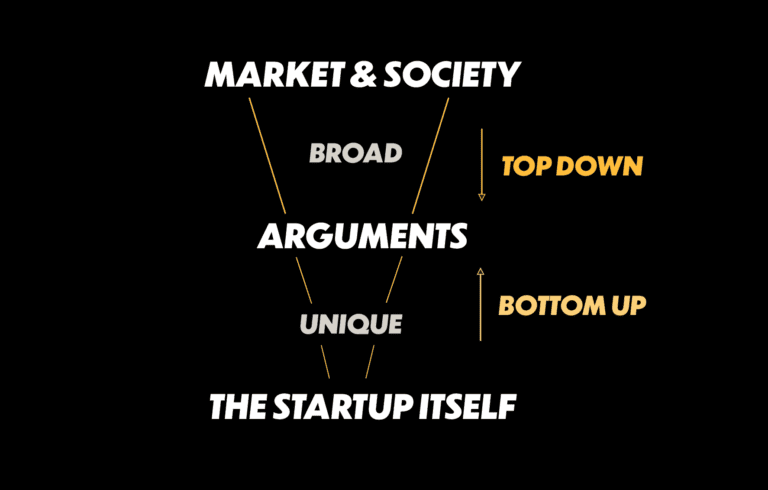What is strategy mapping and why do it?
Strategy maps are a great organizing tool that a business or organization can use to implement strategy, as it lays out the processes and systems that will help them implement said strategy in a clear, visual manner. Strategy maps help visualize the entire strategy of a business in a central location, as it shows the interlinking relationships between components of an organizational strategy. Other benefits of strategy mapping can be: discovering strategic issues that might not be obvious, communicating strategies via a clear and visual medium, and stimulating movement and conversation regarding points in your strategy.
Strategy maps focus on four specific perspectives:
- Financial perspective
- Customer perspective
- Internal process perspective
- Learning and growth perspective
The significance of these perspectives in the strategy map, which is formulated descending from ‘Financial perspective’ to ‘Learning and Growth perspective,’ is to show the cause and effect link between them. By visualizing these perspectives in relation to each other, an organization or business can easily understand what they’re focusing on financially (how to maximize revenue while lowering costs), see how the value proposition for their customers reflects those financial gains or losses, connect how the internal processes can achieve the means for the customer and financial perspectives, and finally link the core skills and competencies of the company to every other following perspective.
How do you create a strategy map?
The first step in creating a strategy map is to define the goals and intent of your business or organization. By having a clear understanding of why your business exists, you create a strong foundation on which the rest of the map is built. After having that picture, it’s important to have an understanding of the environment, and the context in which your business exists. When researching the environment of your business, one key aspect to consider is the different stakeholders (investors, competitors, customers, etc.) you interact with, the roles that they play, and what problems or solutions they may create. The next step is to define the strategy, essentially to describe the next steps that you need to take to guarantee that your business will thrive in the market. After this comes time to translate the strategy into actual map form. Here is when we return to the four perspectives we discussed before:
- Financial Perspective will be at the top of the chart as it identifies the tangible outcomes of the organizational strategy; ways to increase revenue while keeping costs low. There are two aspects of financial strategies: revenue growth (long-term objectives) and productivity (short-term objectives). The overall objective of a strategy should be to sustain growth in shareholder value, and therefore should consist of both short-term and long-term objectives. An example of increasing revenue growth could be engaging the customer through automated email systems that encourage the customers to buy. An example of increasing productivity would be increasing the efficiency of your business processes (check out the article on how to do that here).
- Customer Perspective lies below the financial perspective as it profiles the value proposition for the customers; the unique mix of product and service attributes, customer relations, and image that a company offers. With a clear enough conceptualization of the customer value proposition, you will then know which type of audience to target. In this section, it is important to plot down what makes your business unique, and its appeal to customers.
- Internal Processes Perspective follows the customer perspective, as it underscores the crucial internal processes that will have the most significant impact on the strategy. Internal processes help produce and deliver the value proposition for customers and typically include processes such as operations management, customer management, and social engagement. It is here that you note the processes that you employ in your own business, and consider how they can help deliver the product promised, as well as increase revenue/decrease production costs.
- Learning and Growth Perspective sits at the bottom of the chart as it outlines the intangible assets important to the strategy; the core competencies and skills, the technologies, and the workplace culture of the business required to support the overarching strategy. In this last segment, outline the people, systems, and skills that allow for the aforementioned perspectives to exist.
Once you have assembled your strategy map, you must now identify the cause and effect relationships between the perspectives/objectives. It is best to visualize this by drawing arrows between objectives in each perspective to show this causal relationship. For example, if you hire the right employees they will contribute to the developing of solid internal processes. At this point, you have your organizational strategy visualized through your map and can recognize how each aspect is linked with ease.
Strategy Mapping at Unknown University of Applied Sciences
At Unknown University of Applied Sciences, we prepare entrepreneurs by supplying them with the proper tools needed to create and scale their businesses. Our Master in Scaling Up employs a state-of-the-art curriculum that is tailor-made to align with the scaling of your business. One of the first modules students encounter in our master’s program is Strategy Mapping, as they build a ‘Scaling Up Roadmap’ specific to their business and create a first version on how to tackle national and international expansion. If you’re an entrepreneur ready to hone your skills through learning topics such as Strategy Mapping, our Master of Science in Scaling Up is perfect for you.








